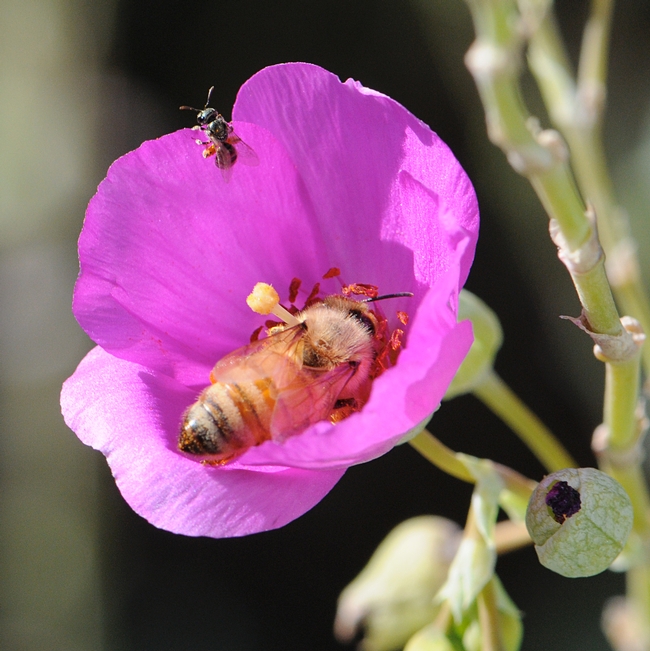Posts Tagged: Gordon Frankie
Bees 'n Blooms
Bees 'n blooms. Blooms 'n bees. Add "California" to it and you have California Bees and Blooms: A Guide for Gardeners and Naturalists. It's a book...
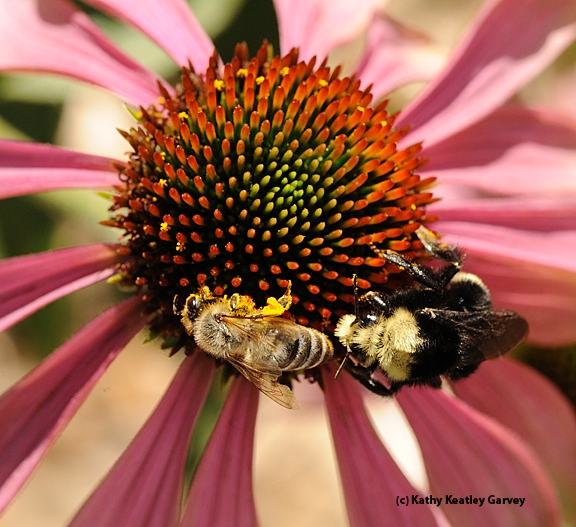
A honey bee and yellow-faced bumble bee, Bombus vosnesenski, share a coneflower. (Photo by Kathy Keatley Garvey)
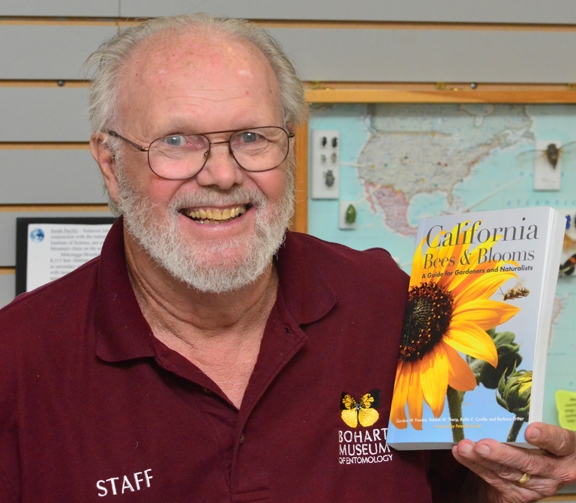
Native pollinator specialist Robbin Thorp with a copy of the book. (Photo by Kathy Keatley Garvey)
Urban environments are refuges for bees
Holland focused on the work of Gordon Frankie, an urban entomologist at UC Berkeley. He has been studying the foraging habits of native bees in Costa Rica to find out how much they forage in urban gardens.
Costa Rica has 800 bee species; Gordon's team has collected 112. They found that in most cases, a plant specimen located in an urban setting attracts as many bee species as does its wild counterpart. Occasionally, city specimens actually get more bees than the wild ones. As many as 80 percent of the native bees observed in wild settings were also visiting the urban gardens.
“That was higher than we expected, and it gave us hope. As more natural areas are disappearing or being impacted by humans, urban areas offer something more stable — people are looking after them," Frankie said.
Frankie is also monitoring the status of native bees in California, where there are 1,600 species, the article said. Gordon and his team have found 90 species of bees in the San Francisco Bay Area and East Bay region. Gardeners can help local bees by putting the Best Bee Plants for California around their homes.
Frankie also has a new book for sale, California Bees and Blooms: A Guide for Gardeners and Naturalists, $28 from Heyday Books.
A, B, and C: What They Really Stand for...
Give me an "A" (for excellence). Give me a "B" (for bee). Give me a "C" (for Cosmos). Watching honey bees collect nectar and pollen on the showy...
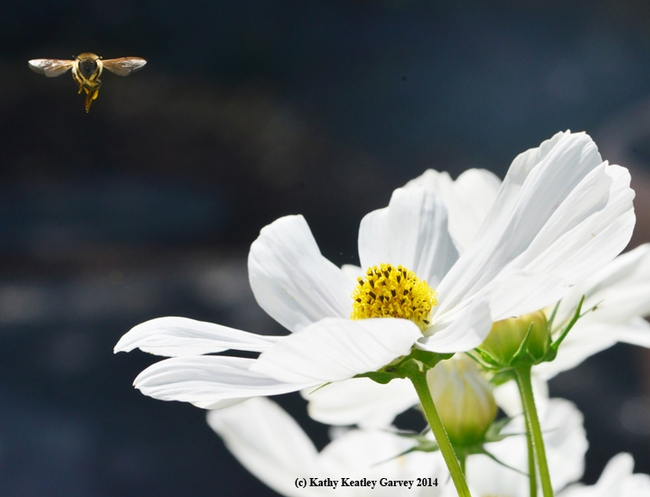
Honey bee heading for a Cosmos. (Photo by Kathy Keatley Garvey)
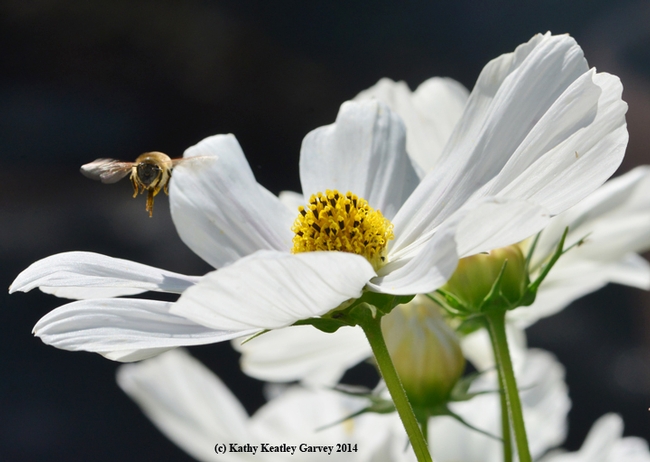
All the right moves. (Photo by Kathy Keatley Garvey)
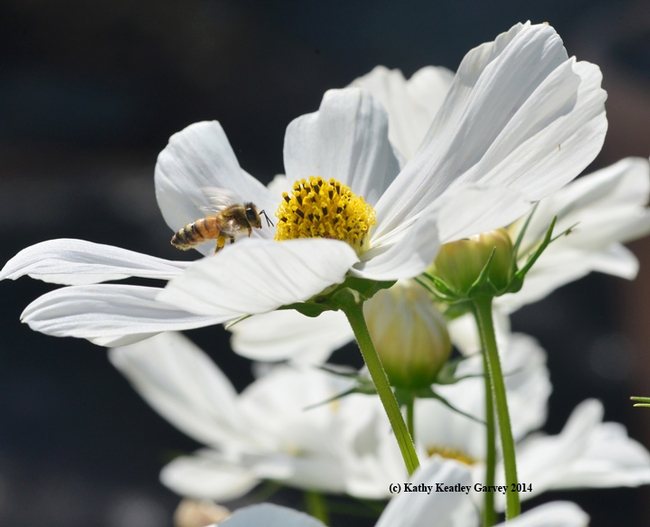
The grand entrance. (Photo by Kathy Keatley Garvey)
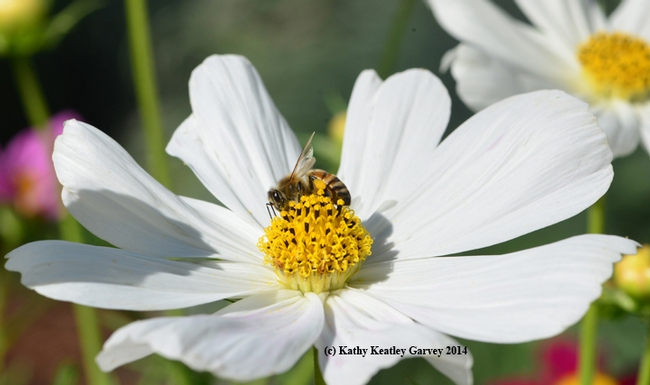
The reward: nectar and pollen. (Photo by Kathy Keatley Garvey)
About Those Sleepovers...
We're receiving lots of inquiries about sleepovers ever since we began posting images of male longhorned bees, Melissodes agilis, sleeping on our...
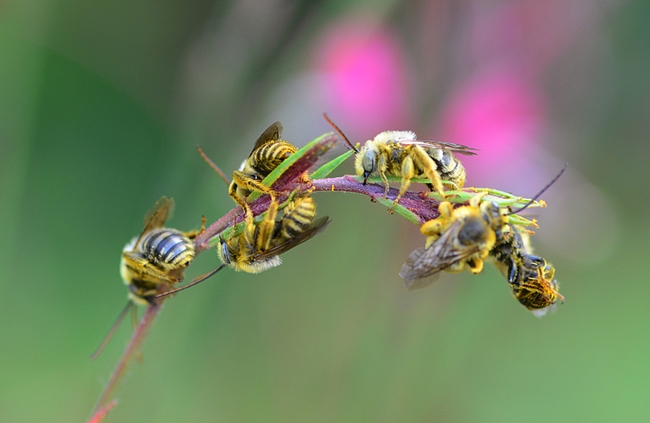
Male longhorned bees jockeying for position on a guara stem. (Photo by Kathy Keatley Garvey)
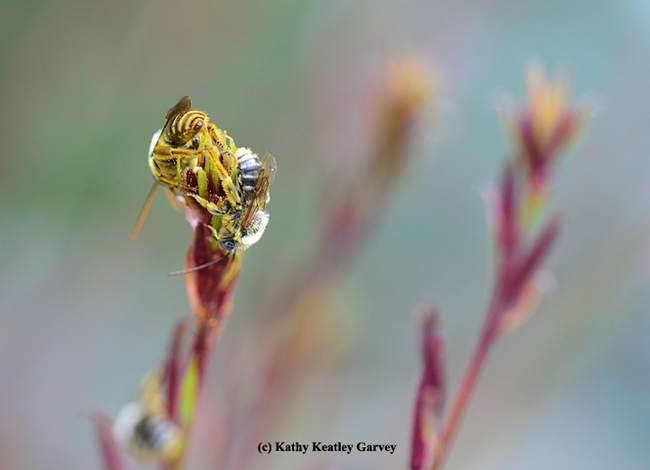
Not every stem is taken and not all the males cluster six or seven to a stem. These two appear to want space. (Photo by Kathy Keatley Garvey)
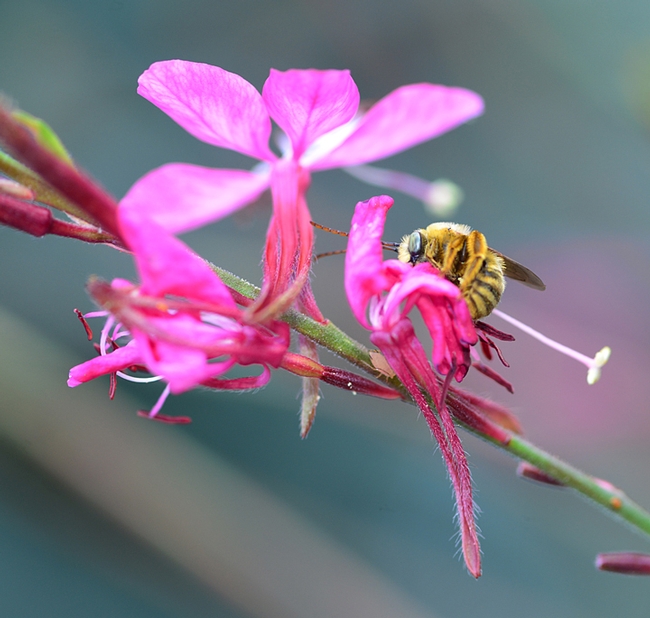
This male Melissodes agilis, is sleeping solo on a guara blossom. (Photo by Kathy Keatley Garvey)
Learn About Native Bees and the Flowers They Visit
It's just in time for National Pollinator Week, June 16-22. Native bee enthusiast Celeste Ets-Hokin of the Bay Area is on a three-fold mission: She...
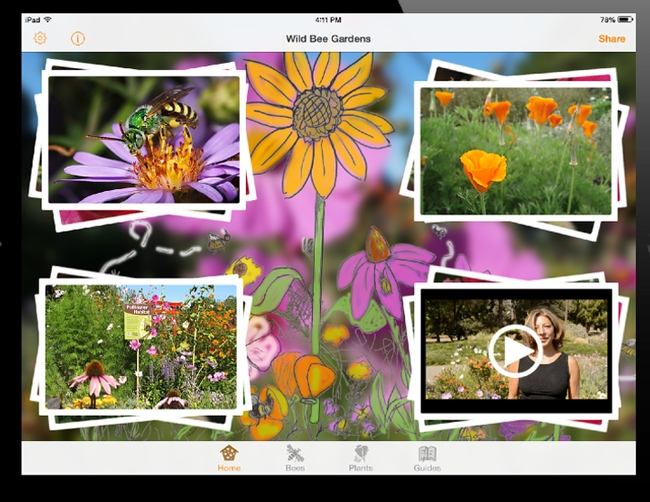
A screen shot of the "Wild Bee Gardens" app.
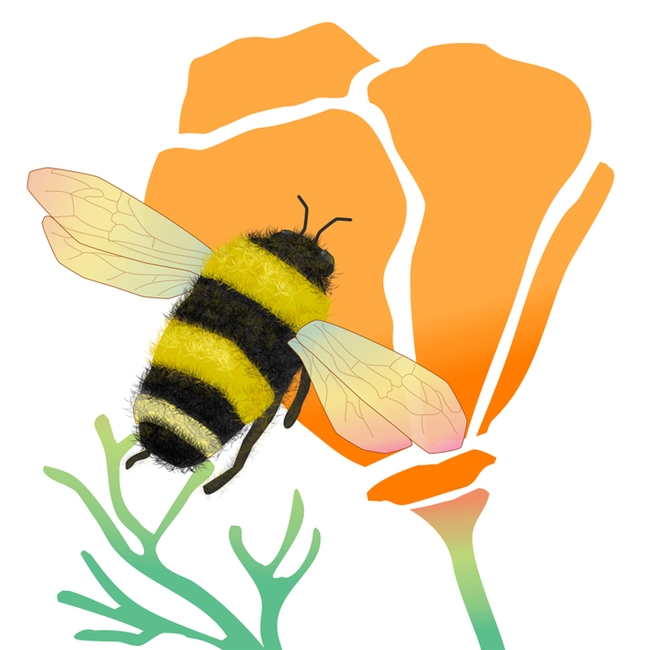
This is the app icon. It's of the yellow-faced bumble bee, Bombus vosnesenskii, heading toward a California poppy.


